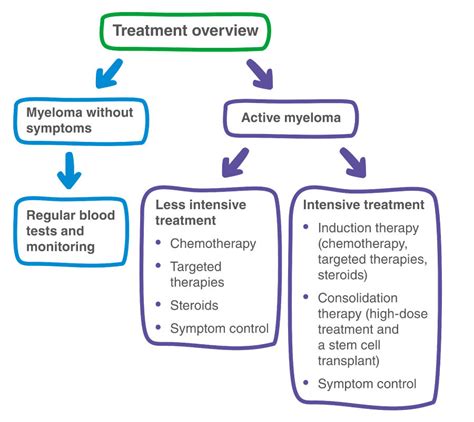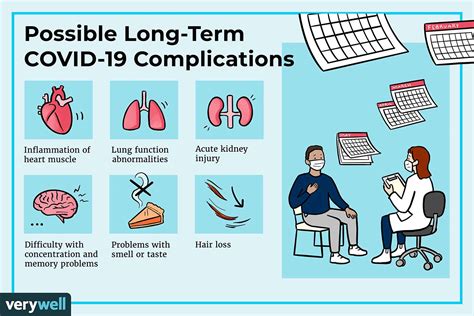Intro
Discover the latest Flu Symptoms 2025 Guide, covering common influenza signs, prevention methods, and treatment options, including viral fever, cough, and respiratory issues, to help you manage and recover from the flu effectively.
The flu, also known as influenza, is a highly contagious respiratory illness that affects millions of people worldwide every year. With the constant evolution of the virus, it's essential to stay informed about the latest flu symptoms, treatment options, and prevention strategies. As we approach the year 2025, it's crucial to understand the potential changes in flu symptoms and how to protect yourself and your loved ones from this debilitating illness. In this comprehensive guide, we'll delve into the world of flu symptoms, exploring the latest research, expert insights, and practical tips to help you navigate the upcoming flu season.
The importance of understanding flu symptoms cannot be overstated. The flu can range from a mild illness to a life-threatening condition, especially for vulnerable populations such as the elderly, young children, and people with underlying health conditions. By recognizing the early signs of the flu, you can take prompt action to seek medical attention, reduce the risk of complications, and prevent the spread of the virus to others. Moreover, staying up-to-date with the latest flu symptoms and treatment options can help you make informed decisions about your health and well-being.
As we move forward in time, it's essential to consider the potential impact of climate change, global travel, and antimicrobial resistance on the spread and severity of the flu. The World Health Organization (WHO) and other health authorities are continually monitoring the situation, providing updates on the latest flu strains, vaccination recommendations, and public health guidelines. By staying informed and taking proactive steps to protect yourself and your community, you can play a vital role in reducing the burden of the flu and promoting a healthier, more resilient world.
Understanding Flu Symptoms

Flu symptoms can vary from person to person, but common signs of the illness include fever, chills, cough, sore throat, runny or stuffy nose, headache, fatigue, and muscle or body aches. In some cases, people may experience vomiting and diarrhea, although these symptoms are more common in children than adults. It's essential to note that not everyone with the flu will exhibit all of these symptoms, and some people may experience additional symptoms such as chest pain, difficulty breathing, or confusion.
Types of Flu
There are three main types of flu viruses: A, B, and C. Type A and B flu viruses are responsible for the seasonal epidemics that occur almost every winter in the United States. Type C flu viruses, on the other hand, are relatively mild and do not cause significant outbreaks. Within type A and B flu viruses, there are several subtypes, which can further complicate the diagnosis and treatment of the illness.Causes and Risk Factors

The flu is caused by the influenza virus, which is spread through the air when an infected person talks, coughs, or sneezes. The virus can also be transmitted through contact with contaminated surfaces, such as doorknobs, keyboards, and other frequently touched objects. Certain groups of people are at higher risk of developing severe flu symptoms, including:
- Older adults (65 years and older)
- Young children (under 5 years)
- Pregnant women
- People with underlying health conditions, such as heart disease, lung disease, or diabetes
- People with weakened immune systems, such as those with HIV/AIDS or undergoing chemotherapy
Prevention Strategies
Preventing the flu requires a multi-faceted approach that includes vaccination, good hygiene practices, and lifestyle modifications. The Centers for Disease Control and Prevention (CDC) recommend that everyone 6 months and older receive a flu vaccine each year, with some exceptions for people with severe allergies or other health conditions. Additionally, practicing good hygiene, such as washing your hands frequently, avoiding close contact with people who are sick, and avoiding touching your eyes, nose, and mouth, can help reduce the spread of the virus.Treatment Options

If you do contract the flu, there are several treatment options available to help alleviate symptoms and reduce the risk of complications. Antiviral medications, such as oseltamivir (Tamiflu) and zanamivir (Relenza), can help shorten the duration and severity of the illness, but they must be started within 48 hours of symptom onset. Over-the-counter medications, such as pain relievers and decongestants, can also help manage symptoms, but it's essential to follow the recommended dosage and consult with a healthcare professional before taking any medication.
Home Remedies
In addition to medical treatment, there are several home remedies that can help alleviate flu symptoms and promote recovery. These include:- Staying hydrated by drinking plenty of fluids, such as water, clear broths, and electrolyte-rich beverages
- Resting and avoiding strenuous activities
- Using a humidifier to relieve congestion and cough
- Practicing good hygiene, such as washing your hands frequently and avoiding close contact with others
- Managing stress through relaxation techniques, such as meditation or deep breathing exercises
Complications and Long-Term Effects

In some cases, the flu can lead to serious complications, such as pneumonia, bronchitis, and sinus and ear infections. These complications can be life-threatening, especially for vulnerable populations. Additionally, some people may experience long-term effects from the flu, such as:
- Fatigue and weakness
- Cough and congestion
- Shortness of breath
- Chest pain or discomfort
- Depression and anxiety
Seeking Medical Attention
If you or a loved one is experiencing severe flu symptoms, such as difficulty breathing, chest pain, or confusion, it's essential to seek medical attention immediately. Additionally, if you're at high risk of developing severe flu symptoms or experiencing complications, consult with a healthcare professional for guidance on prevention and treatment.Future Directions

As we look to the future, it's essential to consider the potential impact of emerging technologies, such as artificial intelligence and genomics, on the diagnosis, treatment, and prevention of the flu. Researchers are exploring new approaches to vaccine development, including the use of mRNA and DNA vaccines, which could provide more effective and longer-lasting protection against the flu. Additionally, advances in telemedicine and digital health technologies could improve access to healthcare services and enable more timely interventions to prevent the spread of the virus.
Global Cooperation
The flu is a global health issue that requires international cooperation and collaboration to address. The WHO and other global health authorities are working to strengthen surveillance and monitoring systems, improve vaccine distribution and access, and promote public awareness and education about the flu. By working together, we can reduce the burden of the flu and promote a healthier, more resilient world.What are the most common flu symptoms?
+The most common flu symptoms include fever, chills, cough, sore throat, runny or stuffy nose, headache, fatigue, and muscle or body aches.
How can I prevent the flu?
+To prevent the flu, get vaccinated every year, practice good hygiene, avoid close contact with people who are sick, and avoid touching your eyes, nose, and mouth.
What are the treatment options for the flu?
+Treatment options for the flu include antiviral medications, over-the-counter medications, and home remedies, such as staying hydrated, resting, and practicing good hygiene.
Can the flu lead to serious complications?
+Yes, the flu can lead to serious complications, such as pneumonia, bronchitis, and sinus and ear infections, especially for vulnerable populations.
How can I protect myself and my loved ones from the flu?
+To protect yourself and your loved ones from the flu, get vaccinated, practice good hygiene, avoid close contact with people who are sick, and stay informed about the latest flu symptoms and treatment options.
As we conclude this comprehensive guide to flu symptoms in 2025, we encourage you to take proactive steps to protect yourself and your loved ones from this debilitating illness. By staying informed, practicing good hygiene, and seeking medical attention when necessary, you can reduce the risk of complications and promote a healthier, more resilient world. We invite you to share this article with others, ask questions, and engage in conversations about the importance of flu prevention and treatment. Together, we can make a difference and create a brighter, healthier future for all.
